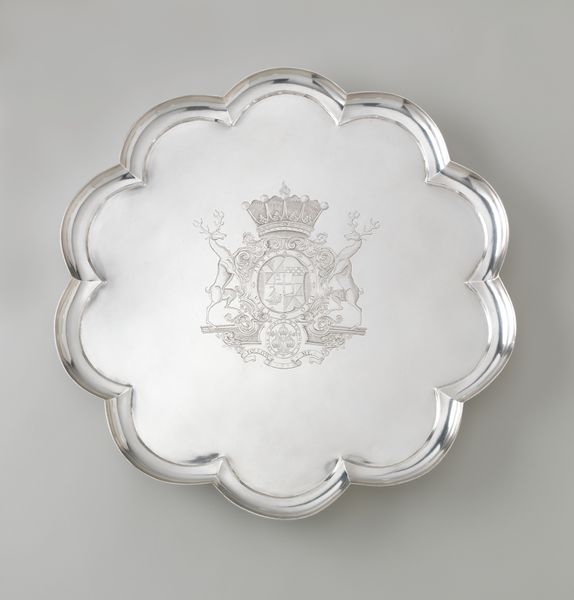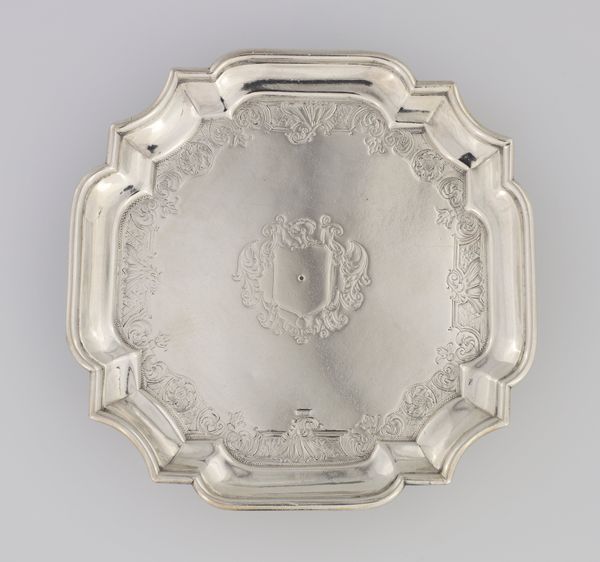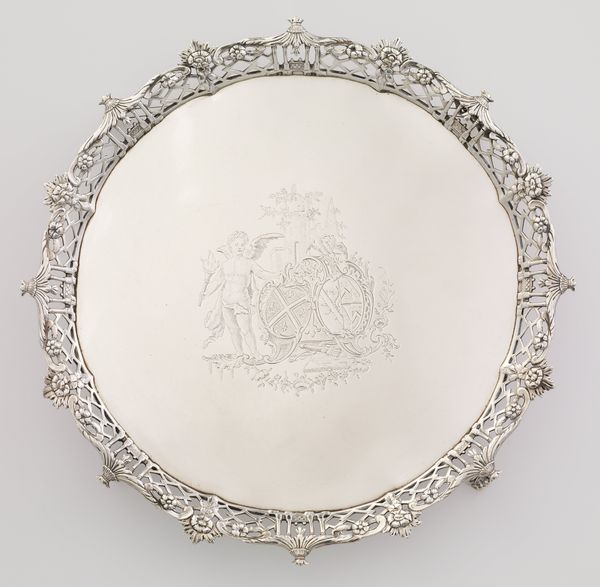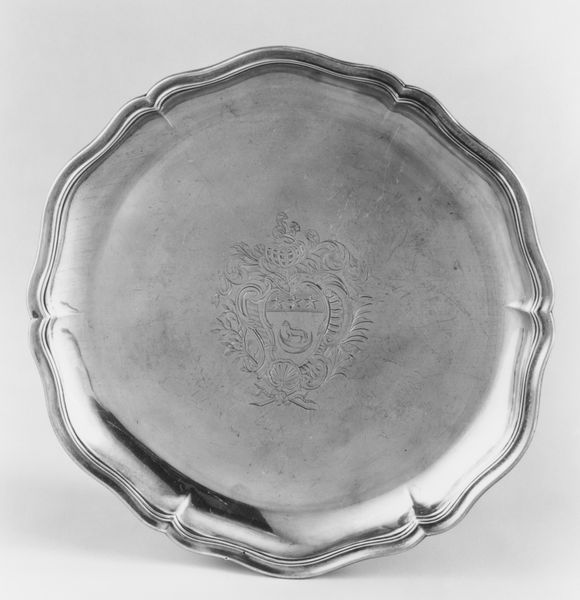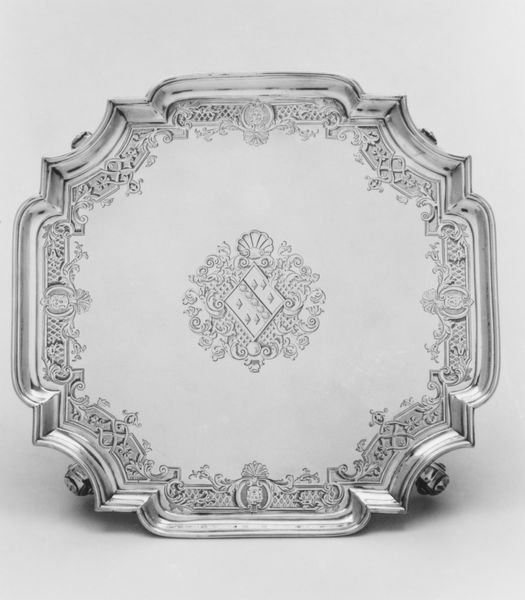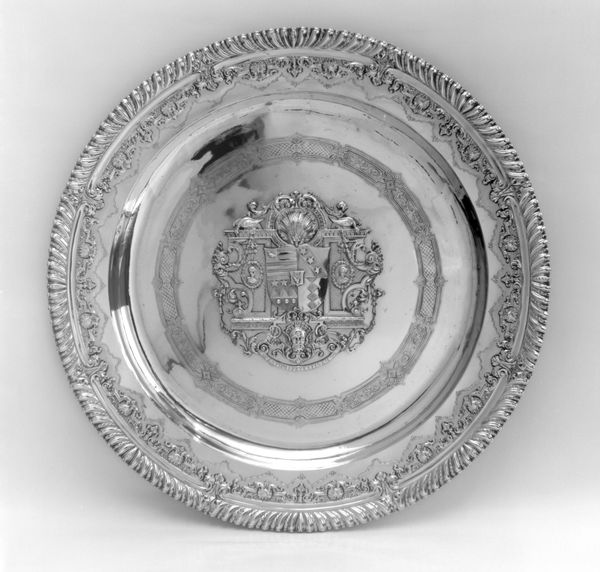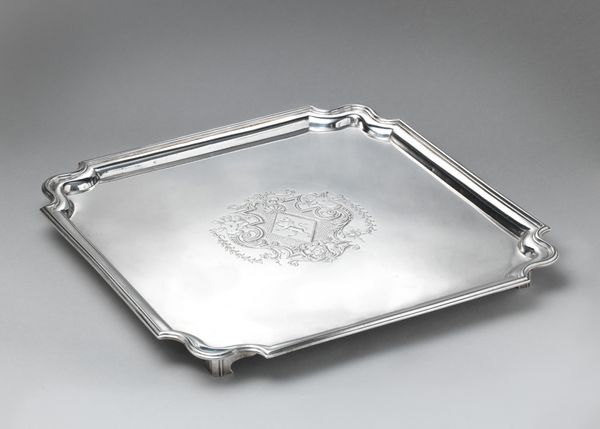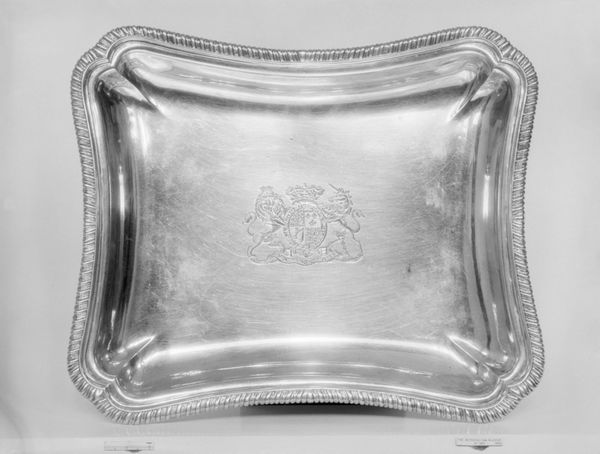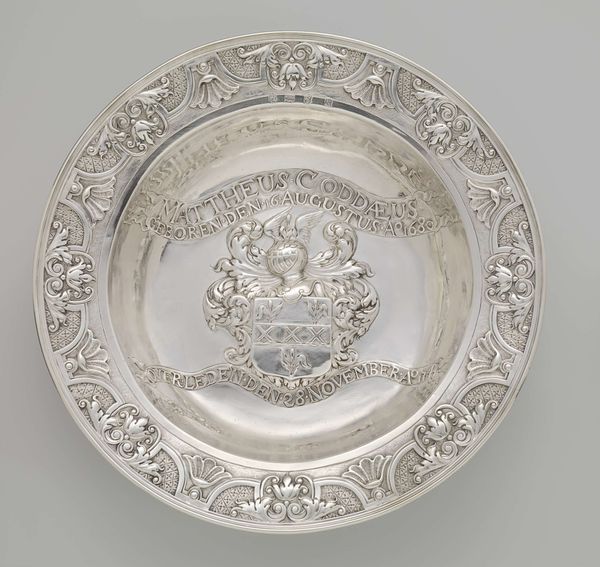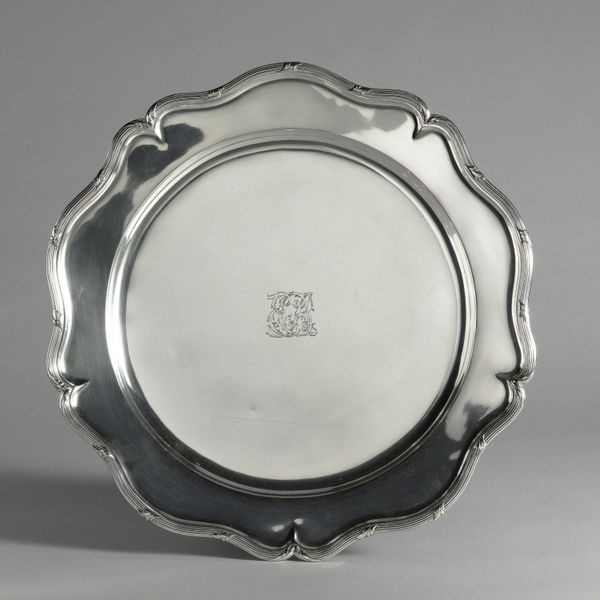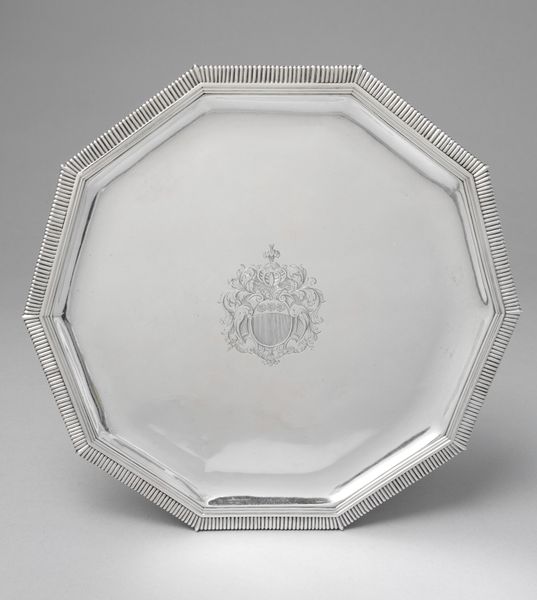
Blad van zilver, rechthoekig met acht inzwenkingen langs de zijden en rustend op vier voluutvormige pootjes. Met gegraveerd spiegelmonogram EE 1748 - 1749
0:00
0:00
silver, metal
#
silver
#
metal
#
decorative-art
#
rococo
Dimensions: height 1.5 cm, width 10.5 cm, length 12.9 cm, weight 152.0 gr
Copyright: Rijks Museum: Open Domain
Editor: So, we're looking at a rather splendid rectangular silver tray, made around 1748 or 1749, crafted by François van Stapele. The sides have these elegant indentations, and it rests on little scroll-shaped feet! It feels very… poised, somehow. I’m intrigued by the monogram. What’s your take on this, what story does it tell? Curator: It’s as if this piece wants to whisper secrets of powdered wigs and hushed drawing rooms, isn’t it? It certainly speaks to the era. That Rococo flourish! The exuberance balanced with restraint, that’s the spirit of the time trying to break free from under its own etiquette. The engraved "EE" – who do you suppose that signifies? I like to imagine a story unfolding. Editor: Perhaps a powerful member of the Dutch upper class? Is the crown part of their monogram, then? I thought only royalty did that kind of thing. Curator: Well, the crown definitely elevates the monogram; suggesting nobility. The Dutch Republic had no king, though the House of Orange had prominence. See how the symmetry of the engraving catches the light; that's no accident! The craftsman's pride shines here. A daily object made magnificent. Editor: That makes sense; it is a little extravagant. It's funny how something functional becomes…art. All the swoops and curls in the corners! And what a way to stamp your initials! Thanks so much for that peek behind the shine. Curator: It’s those daily details of art that often end up marking where we have been; a silver shimmer in the stream of time, right? These pieces can show you the lives of people and tell us more of them, centuries on. I can almost smell the candle wax.
Comments
No comments
Be the first to comment and join the conversation on the ultimate creative platform.
